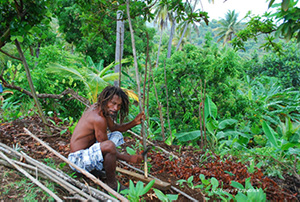Northern Lights and Local Culture: An Unforgettable Experience

Northern Lights in Jasper Dark Sky Park Photo: Visit Alberta
Posted December 18, 2024
Viewing the Northern Lights is a magical experience that tops bucket lists everywhere. It beckons travelers worldwide to frosty destinations. From now until 2026, the aurora borealis activity is expected to reach its highest levels in 11 years. This uptick in solar activity makes the current era a particularly good time for aurora-viewing vacations. This winter, why not combine the experience of searching for this natural phenomenon with a cultural experience in your choice of winter wonderlands?

Northern Lights in Canada’s Northwest Territories Photo: Shutterstock
Canada’s Yukon Territory
The season for the Northern Lights in Canada’s Yukon Territory runs between late August and early April. There are two distinct viewing seasons: autumn from mid-August to mid-October and Winter from mid-October to early April, with a magic window between 10 pm and 3 am. Numerous tour operators are available to share the legends of the aurora borealis, and many operators offer these legends through the lens of the indigenous people who have lived in this region for centuries.
As a 100% Indigenous-owned aurora tour company, North Star Adventures shares stories about Yellowknife along with legends passed down for generations about the aurora. Similar to a hunter in search of its prey, these “aurora hunters” monitor weather conditions and sky activity and use specialized apps to predict when and where the Northern Lights might be visible. During the hunt, tour guides share the many legends surrounding this dancing spectacle in the sky. Examples include The Cree, who believe the lights are spirits of the dead who are trying to communicate with their loved ones on Earth. In contrast, the Algonquin believe the lights reflect a huge fire lit by Nanabozho, the creator of the Earth, to show his people that he was still thinking of them. Combining aurora hunting with the revelation of these ancient legends provides an unforgettable experience as these graceful lights dance across the sky.

Northern Lights over Kirkjufell Mountain in Iceland Photo: Shutterstock
Iceland’s Blend of Northern Lights and Viking History
Winter in Iceland brings a unique blend of Northern Lights and Viking history. The aurora season runs from September through April. But, the darker days of winter provide more opportunities to experience this natural wonder. Escaping light pollution is key to finding the best aurora viewing locations. With Iceland’s plentiful remote areas, you’ll have numerous options.
In the south, Thingvellir National Park, the Jokulsarlon Glacier lagoon, and the black sand beaches of Vik provide excellent viewpoints. Also in the south, the Hotel Rangá sits in a remote location with low light pollution, resulting in enhanced stargazing and aurora viewing. The hotel also features an observatory with powerful telescopes to capture close-ups of the planets and stars.
For more hours of darkness and less cloud cover, consider the Westfjords and Northern Iceland for Northern Lights viewing opportunities. Consider the Asbyrgi Canyon in the north and Kirkjufell Mountain in the west.
A midwinter tradition, Þorrablót – also referred to as Thorrablot – is an Icelandic winter feast. It takes place during the old Norse month of Þorri, which runs from late January to late February. Originating in ancient Viking times, Þorrablót was originally a feast of sacrifice to the Norse God Þor. After Norwegian king Olaf Tryggvason Christianized Iceland in 1000 AD, the pagan beliefs and practices faded away. But, in the late 19th century, a group of Icelandic students resurrected the celebration. It continues today with dancing, singing, and feasting on traditional Viking foods. Not for the faint of heart (or stomach), these legendary foods include boiled sheep’s head and fermented shark washed down with brennivin, a local caraway seed-flavored spirit known as black death. Thankfully, modern-day menus include smoked salmon, sausages, and rye bread.

Northern Lights in Jasper Dark Sky Park Photo: Visit Alberta
Alberta’s Treasured Dark Skies
Natural wonders abound in the Canadian province of Alberta. This geographically blessed region includes Banff National Park’s Canadian Rockies, the Columbia Icefields in Jasper National Park, and the badlands where dinosaurs once roamed the earth. The abundance of outdoor treasures creates a culture of outdoor adventures for every season. Winter brings the chance to pair serene night skies with outdoor activities like snowshoeing under the stars.
Alberta is also home to five dark sky preserves: Beaver Hills, Cypress Hills, Lakeland, Jasper, and Wood Buffalo. As one of the world’s largest accessible dark sky preserves, Jasper offers an unparalleled opportunity to reconnect with the cosmos. Far from city lights, the skies above Jasper National Park become a canvas of twinkling stars, the ethereal glow of the Milky Way, and, when winter arrives, the dance floor for the Northern Lights. After dark, iconic locations within the park, like Pyramid Lake and Maligne Canyon, transform into magical stargazing spots, blending natural beauty with cosmic wonder.
October brings the Jasper Dark Sky Festival. The event draws astronomy enthusiasts and families alike. The event features engaging workshops, awe-inspiring telescope viewings, and celebrity speakers. However, the park’s stargazing experiences shine year-round. Jasper’s dedication to preserving its pristine skies ensures travelers can escape into a tranquil world that fosters a sense of wonder.

The Northern Lights Cathedral in Alta Photo: Visit Norway
Norway’s Northern Lights Cathedral
When a community procures the moniker “Town of the Northern Lights” it deserves a spot on any aurora borealis chasing itinerary. Situated 375 kilometers north of the Arctic Circle in Norway’s northernmost county of Finnmark, the picturesque fjord town of Alta is home to the world’s first observatory dedicated to the study of the Northern Lights. The observatory sits above the town on Mount Haldde. In the town center, the bold design of the Northern Lights Cathedral celebrates the beauty of the aurora borealis.
For a cultural experience unique to Norway, time your visit for Sami National Day. February 6 marks the anniversary of the first Sami national meeting held in Trondheim, Norway, in 1917. Norway is home to the most Sami in the world, with the vast majority of settlements being located in Northern Norway. In celebration of this culturally significant day, Sami wear their traditional garments, the gákti, which vary in style and color depending on the region and personal heritage. The celebration includes music and dance, and reindeer sledding and racing.
Click Here for Discounted Accommodations in Northern Norway
Join the community!

Join our community to receive special updates (we keep your private info locked.)




